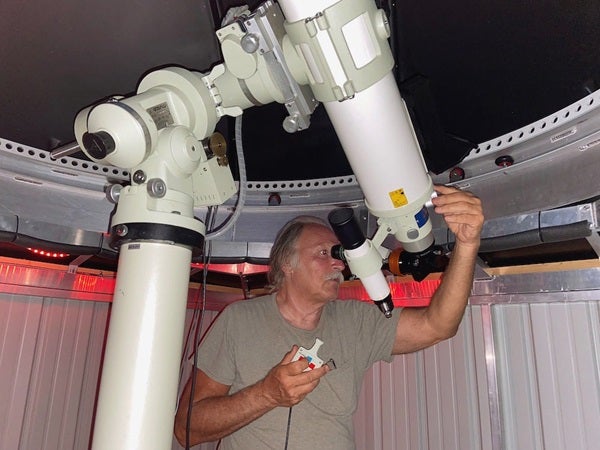Sales of binoviewers for telescopes and matching eyepieces have exploded in the past five years, showing that backyard astronomers are really getting into two-eye observing. Binoviewers split light from your telescope into two beams, sending one to each eye for more comfortable — and natural — viewing that often turns celestial scenes three-dimensional. Nonetheless, you may have heard that binoviewers do not deliver true 3D. So, let’s examine this realm in all its dimensionality.
As readers probably know, seeing in three dimensions requires that each eye see a slightly different image. In practice, distant objects appear identical in both eyes, while foreground targets appear shifted relative to those far-off markers. The brain uses these disparate images to stitch together the 3D world we see in front of us — or, at least, seem to see in front of us.
As Roy Bishop, former editor of The Royal Astronomical Society of Canada’s Observer’s Handbook, repeated in each annual edition, visual images occur strictly within the skull. Language, custom, and a sort of neurological magic make us regard the visual world as occurring outside our bodies. In reality, photons of light possess neither color nor brightness. The world that appears to unfold in front of our noses is solely our mind’s concoction, the result of billions of neurons creating the visual experience.
This is an important distinction because it’s easy to provoke the perception of 3D without one object actually being situated in front of another. Perhaps — like me — you have at some point slightly crossed your eyes while in front of a chain-link fence and watched it then acquire a “pop-out” appearance as your brain creates an incorrect sense of 3D. Our editor, David Eicher, forces our minds to do something similar in his 3D astronomy books. An actual 3D view of even the nearest nebula would require our eyes to be situated at least 8 light-years apart. To create a sense of depth on a printed page or screen, pictures of celestial objects are painstakingly (and minutely) altered so that each eye views image fragments displaced a bit. Our brains do the rest.
But what about real-life 3D? In the 19th century, Hermann Von Helmholtz determined that for humans, the maximum distance at which objects appear with stereopsis — one object seeming closer than the other — is 650 feet (200 meters), or about 2½ city blocks. However, some researchers believe our 3D experience may actually stretch to 0.6 mile (1 kilometer). Binoculars extend this perception to greater distances because their objective lenses are mounted farther apart than human eyes. The depth effect is dramatic, which is one of the reasons binoculars are so much fun to use.
Which brings us back to the current binoviewer craze. I’m one of those who is totally hooked. When I decadently built a second observatory near my home, it not only provided a telescope two minutes from my pillow, it also included a 5-inch refractor perfect for a binoviewer. So, I discontinued decades of deep-space viewing with my 40-year-old, 12.5-inch, pier-mounted reflector and turned exclusively to the Moon and planets, always with the binoviewer using 60x to 200x magnification.
It blew me away. But since binoviewers deliver identical images to each eye, it’s not actual 3D, right?
Well, it looks like 3D. It feels like 3D. And, with the slow-wittedness my friends assure me I’ve not outgrown, I’ve realized that it is indeed 3D. That’s because distant objects have zero parallax to begin with. So, when both eyes see identical images, the brain perceives the scene as being very distant. Since astronomical scenes are indeed far away, a binoviewer delivers the identical celestial view you’d get if each eye received an image from a separate telescope, even if the scopes were a mile apart. It’s a legitimate 3D perception.
The only thing that spoils it is poor seeing: The 3D effect is diminished when both eyes discern identical simultaneous distortions. So, the next time you’re at the eyepiece and think, “Wow, another night of wiggly seeing! Must be a day ending in y!” do yourself a favor — and I don’t mean move to Mauna Kea. Merely delay the session and return to your regular life, which at least reliably unfolds in full stereopsis.










